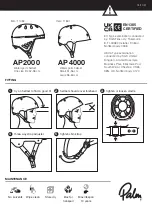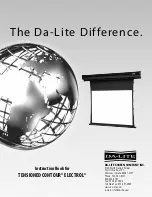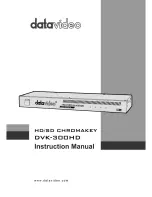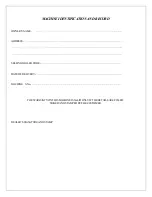
sprint-3000-manual-e
Page 10 / 12
Operating temperatures above 50 °C must be avoided. Please note that some etchant react exo -
thermically particularly at high throughput, so the etchant seems to heat itself. In this case, set the tem-
perature accordingly to a lower value. If necessary wait for cooling down of the etchant (at no-load-op-
eration) before you continue.
After work or prolonged interruption close the cock valve of the building to prevent water damage from
a possible leak in the hose.
After completion of the work, the main switch should always be turned off.
Cleaning and Maintenance:
Caution:
For service, cleaning or repair work, always unplug the power cord!
Before draining the tanks, let the heater cool down for approx. 10 min, so the heaters will not get dam-
aged.
Attach a short piece of hose to the ball valve of the etching tank, and put the other end into a provided
suitable container. Open the drain valve. In order to resolve any muddy residues, rinse with some extra
water through the inlet of the etching tank.
Disassembly:
1. Open the exhaustion hood.
2. Remove the cover.
3. Open the nozzle bar screw thread and remove the nozzle bar.
The nozzles themselves can be easily removed by rotating
the bayonet lock. The nozzles are hold into position by the
nozzle nuts and cannot move, so no need for readjustment
when assembling again.
4. The drive units can be easily removed completely. First re-
move the upper squeeze rollers. Lift the transport unit at the
outlet side and shortly advance towards the outlet, the trans-
port unit can be easily taken from the machine.
Cleaning:
All parts beside the transparent hood can be cleaned with a mild abrasive liquid detergent. The hood
should not be treated with abrasive materials as it will lose its transparency. When using ferric chloride
as an etchant you will have good cleaning results using our stain remover RX3. The removal of dirt and
etching agent residues needs to be followed by a thorough cleaning with clean water.
Remove all sludge deposits mechanically and dispose together with the used etchant.
When you use ferric-(III)-chloride persistent dirt can also be chemically removed or at least resolved.
For this, the machine is operated instead of etchant with a 10-15% solution of hydrochloric acid or al -
ternatively with our stain remover RX3. For more information we provide you with a separate instruc-
tion.
Bungard Elektronik GmbH & Co. KG, Rilkestraße 1, 51570 Windeck – Germany
Tel.: +49 (0) 2292/9 28 28 - 0, Fax: +49 (0) 2292/9 28 28 - 29, E-mail: [email protected]






























